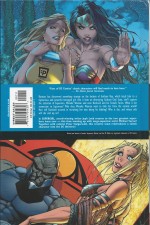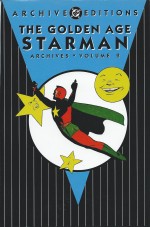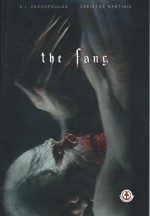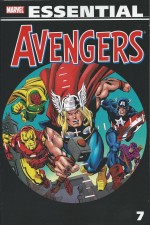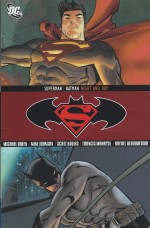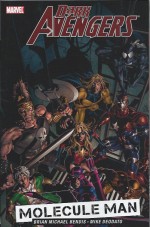
By Brian Michael Bendis, Mike Deodato, Rain Beredo & Greg Horn (Marvel)
ISBN: 978-0-7851-3854-9
One of the most momentous events in Marvel Comics history occurred in 1963 when a disparate array of freshly minted individual heroes banded together to stop the Incredible Hulk. The Mighty Avengers combined most of the company’s fledgling superhero line in one bright, shiny and highly commercial package, and over the years the roster has waxed and waned until almost every character in their universe – and even some from others – has at some time numbered amongst their serried ranks.
After years of valiant, if often controversial service to humanity, when the draconian Federal initiative known as Superhuman Registration Act led to Civil War between costumed heroes, Tony Stark AKA Iron Man was appointed the American government’s Security Czar – the “top cop†in sole charge of a beleaguered nation’s defence and freedom: Director of high-tech enforcement agency S.H.I.E.L.D. and last word in all matters involving metahumans and the USA’s vast costumed community…
Stark’s mismanagement of various crises led to the arrest and assassination of Captain America and an unimaginable escalation of global tension and destruction, culminating in an almost-successful Secret Invasion by shape-shifting alien Skrulls.
Discredited and ostracised, Stark was replaced by apparently rehabilitated and recovering schizophrenic Norman Osborn (the original Green Goblin), who assumed full control of the USA’s covert agencies and military resources, disbanded S.H.I.E.L.D. and placed the nation under the aegis of his own new organisation H.A.M.M.E.R.
The erstwhile Spider-Man villain had begun his climb back to respectability after taking charge of the Government’s Thunderbolts Project; a penal program which offered a second chance to super-criminals who volunteered to undertake Federally-sanctioned missions…
Not content with commanding legitimate political and personal power, Osborn also secretly conspired with a coalition of major menacing masterminds to divvy up the world between them. The Cabal was a Star Chamber of super-villains all working towards a mutually beneficial goal, but such egomaniacal personalities could never play well together and cracks soon began to show, both in the criminal conspiracy and Osborn himself.
As another strand of his long-term plan, the Homeland Security overlord subsequently sacked the Avengers and formed his own, more manageable team consisting of replacements and outright impostors…
Constantly courting public opinion, Osborn launched his Avengers whilst systematically building up a new, personally loyal high-tech paramilitary rapid-response force. Moreover, seemingly to keep himself honest, he hired ex-S.H.I.E.L.D. hardliner Victoria Hand as his Deputy Director, tasked with watching the recovering madman for any signs of regression into criminal insanity…
His second-in-command was also occupied with the day-to-day running of the organisation whilst he concentrated on keeping Greek War-God Ares, mentally-disturbed superman Sentry and altruistic, dimensionally displaced alien Noh-Var – now dubbed Captain Marvel – unaware of his true intentions.
His other recruits were content with the sweet perks and devious deals on offer. Bullseye, Moonstone, Venom and Wolverine‘s psychotic son Daken Akihiro happily counterfeited Hawkeye, Ms. Marvel, Spider-Man and the irascible mutant Avenging X-Man, especially as Osborn had confiscated and repurposed Tony Stark’s greatest inventions into his own suit of super-armour, retooled and finished to invoke impressions of both Captain America and the Golden ex-Avenger. Iron Patriot was always at the forefront of his hand-picked team, leading from the front as a true American hero should…
Collecting issues #9-12 (December 2009-March 2010) of the controversial Dark Avengers series scripted by Brian Michael Bendis and illustrated by Mike Deodato & colourist Rain Beredo, this volume begins to catalogue the cracks in the façade.
As Osborn starts to become unglued, the God of War takes a personal day and follows his son Alexander.
Nick Fury, driven by duty, fuelled by suspicion and powered by a serum which kept him vital far beyond his years, didn’t go away when S.H.I.E.L.D. was shut down. He just went deep undercover and continued doing what he’d always done – saving the world, one battle at a time. From an unassailable, unsuspected vantage point Fury picked his battles and slowly gathered assets and resources he’d personally vetted or built…
The indomitable freedom fighter had always known that to do the job properly he needed his own trustworthy forces and no political constraints. To this end he had long endeavoured to clandestinely stockpile his own formidable team, which included a crack squad of super-human operatives: Yo Yo Rodriguez AKA Slingshot, Sebastian Druid, Jerry “Stonewall†Sledge, J.T. “Hellfire†James and Daisy Johnson, codenamed Quake, and the terrifyingly volatile Alexander: a 12-year old boy of incredible power.
The child Phobos was destined to become a true god – the personification of Fear – but until then his daily-developing divine gifts were Fury’s to use…
Now Ares tracks his delinquent child to the lair of his commanding officer’s most dangerous enemy. Instead of all-out combat, however, the confrontation with Fury leads to a shaky détente and an improbable deal…
The main part of this volume then deals with the faux team’s most perilous challenge, as a string of uncanny disappearances in back-of-beyond hamlet Dinosaur, Colorado ties in with Osborn’s desire to keep his bored and dangerous team occupied.
However when the more-than-godlike Sentry is apparently vaporised, the grand schemer realises the magnitude of the unidentified menace and mobilises his entire organisation.
But as his team approach ground zero and the still unknown foe, each is whisked into a personalised hell (illustrated in painted sections by Greg Horn) wherein impossibly overwhelming Molecule Man Owen Reece sits in judgement and metes out appalling punishments on the interlopers who have desecrated his private paradise and playground…
With only Victoria Hand left the situation looks dire, but the former S.H.I.E.L.D. bean-counter undertakes a brilliant last-ditch stratagem which delays events long enough for Sentry to somehow reassemble himself and battle the most powerful creature in existence to a standstill…
Not even Sentry himself realised just how strong he truly was, and as that terrifying fact sinks in Osborn continues to mentally unravel – even as his erstwhile Cabal ally Loki attacks…
To Be Concluded…
This portentous, doom-drenched psycho-drama builds breathtaking suspense whilst delivering blistering action in a slowly-intensifying progression as part of the “Dark Reign†company-wide crossover which impacted upon the entire Marvel Universe, yet besides being a component of an overarching epic, still holds together effectively as an entertaining one-off read for casual Fights ‘n’ Tights fans…
Also included to enhance the appeal are a cover gallery by Deodato & Beredo, a wealth of Characters Designs and unused material, a 4-page article on the Cover Process, Norman’s Dream Sketchbook by Greg Land and an information feature on Molecule Man taken from the Marvel Universe Handbook.
Although definitely not a book for younger fans, this is another striking saga from author Bendis, packed with intrigue and action, magnificently illustrated and offering an engaging peek at the sinister side of superheroics and the deadly downside of good intentions.
© 2009 and 2010 Marvel Characters, Inc. All Rights Reserved.

